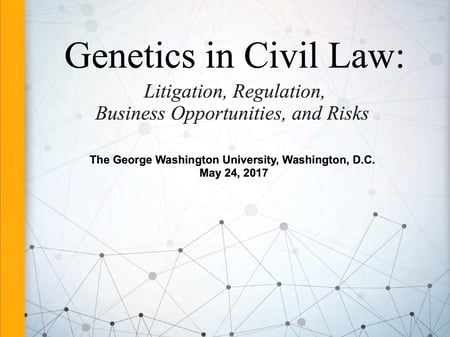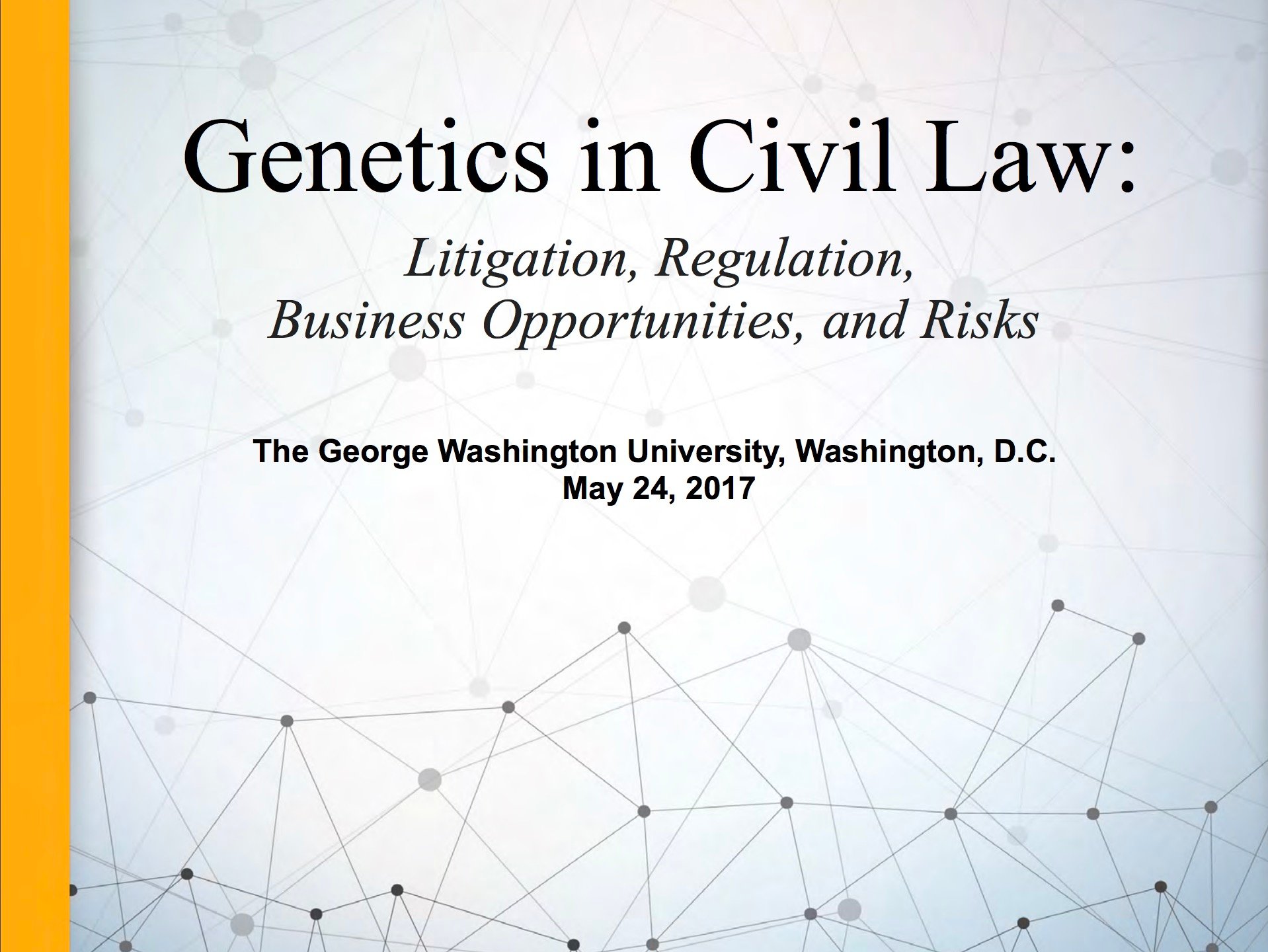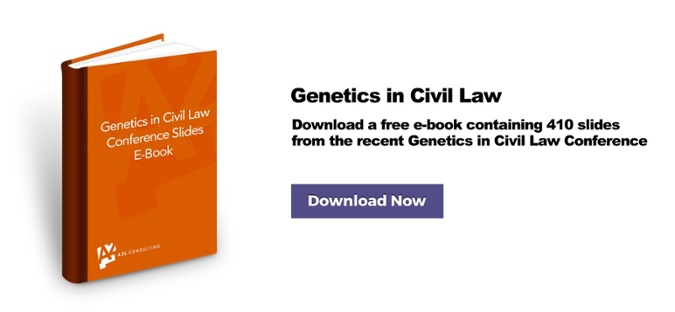 by Ken Lopez
by Ken Lopez
Founder/CEO
A2L Consulting
We recently had the opportunity to co-host a conference focused on the use of genetics in the courtroom. The conference was entitled Genetics in Civil Law: Litigation, Regulation, Business Opportunities, and Risks. A2L was joined in hosting by three science-focused expert firms that are pioneers in the law and genetics field.
For me, the real pleasure of participating in the conference was how much I learned. That's kind of unusual for a conference, right? There are just a handful of valuable takeaways at most conferences I attend. Here, there were dozens of them, simply because of the nature of the material and the state of the art. The work being done by the speakers, the hosts, and many of the participants is genuinely pioneering -- both as it applies inside the courtroom and outside.
Here are seven key takeaways that highlight some of the most valuable aspects of attending the conference. Please note that number 7 is your ability to download the slides for free from the key speakers without further obligation of any kind.
- The use of DNA evidence in the courtroom is relatively new. From watching TV, from the OJ case, and from our practices, we're all generally familiar with how DNA evidence is used in criminal cases. Many people are surprised to learn that its use as evidence in the courtroom dates only to the mid-1980s. That's right, in the courtroom, DNA evidence is just 25 years old.
- The use of genetic evidence in civil cases is just beginning. For trial lawyers involved in big-ticket litigation, the present is the equivalent of the mid-1980s for criminal lawyers. Genetics and DNA evidence are being used by plaintiffs and defendants in big cases.
- Genetics have been successfully used in many big cases. Not many cases of this sort have made it to trial, but some have. The cases thus far have been related to exposure to substances like benzene, asbestos, and tobacco. Companies have found a successful defense with the use of genetics. We can expect to see such a defense in talc litigation and other emerging pattern litigation soon.
- Genetics can be used to establish an alternative cause. Genetic profiling can not only be used to question or prove causation, but it can also be used to establish an alternative cause, because exposure to certain substances leaves a genetic trace and certain cancers have unique genetic profiles.
- The science is accepted. There is ample precedent for the use of genetic evidence at trial. Indeed, there is 25 years of precedent.
- The eggshell plaintiff worry is just a worry. Defense lawyers know that they have to accept plaintiffs as they find them. That is, if a plaintiff is extra-sensitive to a chemical exposure, that extra sensitivity might provide the plaintiff with extra ammunition. So, the worry I've heard expressed is that if we genetically profile a plaintiff and find that he or she is indeed extra sensitive, we help make the plaintiffs case. However, I learned at this conference that one can assess a case and make a decision about whether genetic analysis will be worthwhile without doing the work and potentially find valuable and powerful alternative cause defenses.
- Click here to download an e-book containing the slide decks from the conference for free.






Leave a Comment